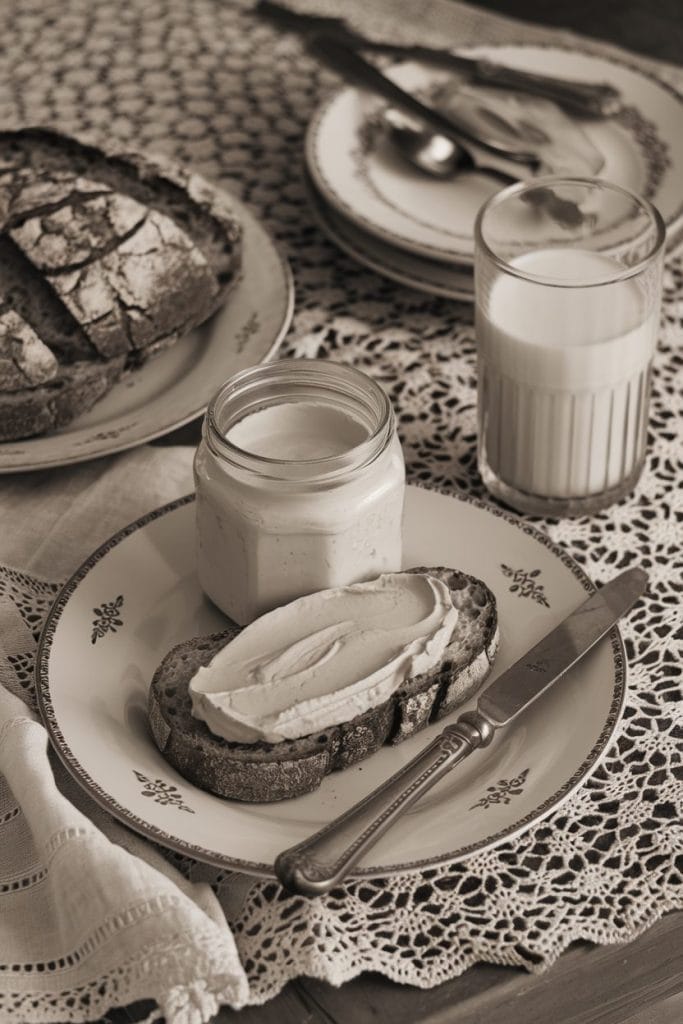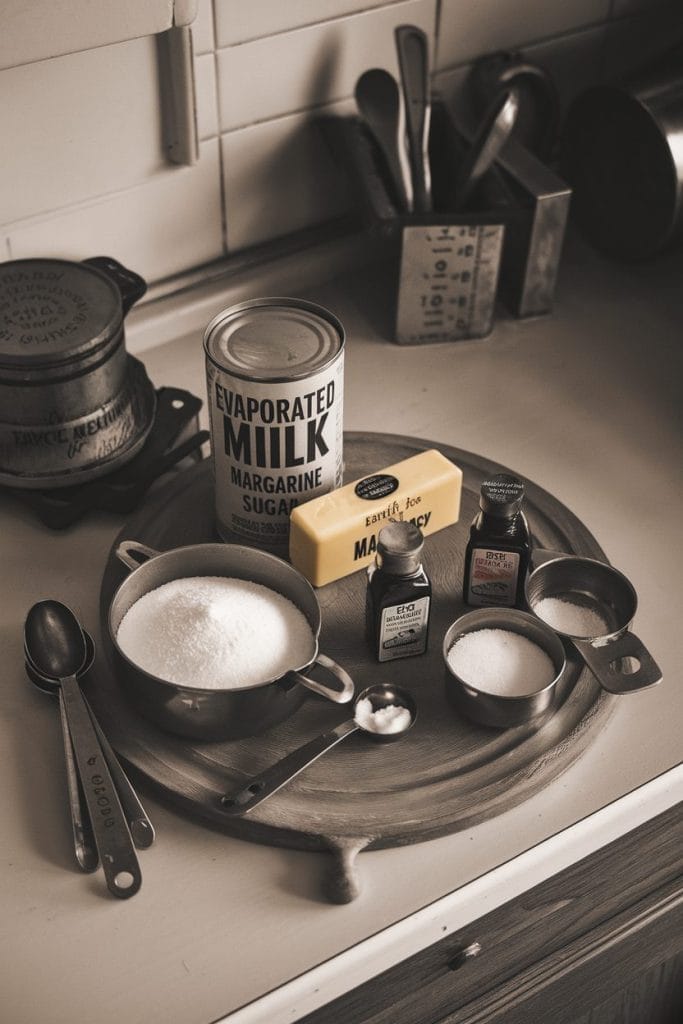Home > Single Recipes > WWII-Era Mock Cream: A Resourceful Substitute from the Wartime Kitchen
Last Updated: February 8, 2025
I Made These FREE Vintage Recipe Tools JUST For You
This recipe was created with help from AI tools and carefully reviewed by a human. For more on how we use AI on this site, check out our Editorial Policy. Classic Fork earns a small commission from Amazon and other affiliate links at no extra cost to you, helping us keep our content free and honest.
WWII-Era Mock Cream: A Resourceful Substitute from the Wartime Kitchen
Time Period:
Meal Type:
Cooking Time: 15 minutes
Prep Time: 5 minutes
Total Time: 20 minutes
Servings: 4
Calories: 200 per serving
During the challenging times of World War II, rationing and scarcity forced households to innovate in their kitchens. One such innovation was Mock Cream, a versatile substitute for traditional cream, allowing families to continue enjoying their favorite dishes despite limited resources.
This recipe not only serves as a nostalgic nod to the past but also offers a simple, dairy-free alternative that can be handy even today.

What Would You Cook in Wartime?
Step back in time and discover what you could make with limited wartime rations
History
In the early 1940s, as the United States mobilized for war, many commodities became scarce, including dairy products like cream. Rationing measures were implemented to ensure fair distribution of essential goods. To cope with these shortages, homemakers turned to creative substitutes.
Mock Cream emerged as a popular solution, combining readily available ingredients to mimic the texture and versatility of real cream. It was used in cooking, baking, and as a spread, ensuring that families could maintain their culinary traditions despite the rationing constraints.
Equipment
Before diving into the recipe, gather the following equipment:
- Mixing Bowl (I love this mixing bowl set): For combining ingredients.
- Whisk or Electric Mixer: To ensure a smooth consistency.
- Measuring Cups and Spoons: For accurate ingredient measurements.
- Saucepan (this is the FATHER of all saucepans!): If heating is required.
- Spatula: For mixing and transferring the mock cream.
Ingredients
To recreate this historical Mock Cream, you will need:
- 1 cup Evaporated Milk
- 1/2 cup Margarine or Vegetable Shortening
- 2 tablespoons Sugar (optional, for a sweeter spread)
- 1 teaspoon Vanilla Extract (optional, for added flavor)
- A pinch of Salt
Note: Adjust the sweetness and flavorings according to your preference or the intended use of the mock cream.

Instructions
Step 1: Gather and Measure Ingredients
Begin by ensuring all your ingredients are measured and ready. This preparation will make the mixing process smoother and more efficient.
Step 2: Melt the Margarine
In a saucepan over low heat, gently melt the margarine or vegetable shortening. Stir continuously to prevent burning and achieve a smooth consistency.
Step 3: Combine Evaporated Milk and Margarine
Once the margarine is melted, remove the saucepan from heat. Slowly pour in the evaporated milk while continuously whisking to blend the two ingredients thoroughly.
Step 4: Add Sugar and Flavorings
If opting for a sweeter mock cream, add the sugar at this stage. Additionally, incorporate the vanilla extract for a richer flavor profile. Continue to whisk until all ingredients are well combined.

Step 5: Incorporate Salt
Add a pinch of salt to balance the sweetness and enhance the overall flavor. Mix thoroughly to ensure even distribution.
Step 6: Cool and Store
Allow the mixture to cool to room temperature. Once cooled, transfer the mock cream to a clean container. Refrigerate for at least an hour to let it set, resulting in a creamy spreadable consistency.
Special Notes
- Consistency Adjustments: If you prefer a thicker mock cream, reduce the amount of evaporated milk slightly. For a thinner consistency, add a bit more evaporated milk.
- Flavor Variations: Experiment with different flavor extracts such as almond or lemon to create unique variations of mock cream.
- Storage: Stored in an airtight container, mock cream can last up to two weeks in the refrigerator. Always use a clean utensil to prevent contamination.
- Usage Tips: This mock cream is perfect as a spread on bread or toast, as a base for frosting in cakes, or as a substitute in recipes that call for cream.
Nutrition
Per Serving (Approximate):
- Calories: 200 kcal
- Total Fat: 14g
- Saturated Fat: 8g
- Cholesterol: 0mg
- Sodium: 150mg
- Total Carbohydrates: 15g
- Sugars: 10g
- Protein: 2g
Note: Nutritional values may vary based on the specific brands and types of ingredients used.

Maggie Hartwell
Hi there, I’m Maggie Hartwell, but you can call me Maggie—the apron-clad foodie behind Classic Fork! I created Classic Fork because I’m convinced food has a way of telling stories that words can’t. So, grab a fork and dig in. The past never tasted so good!






